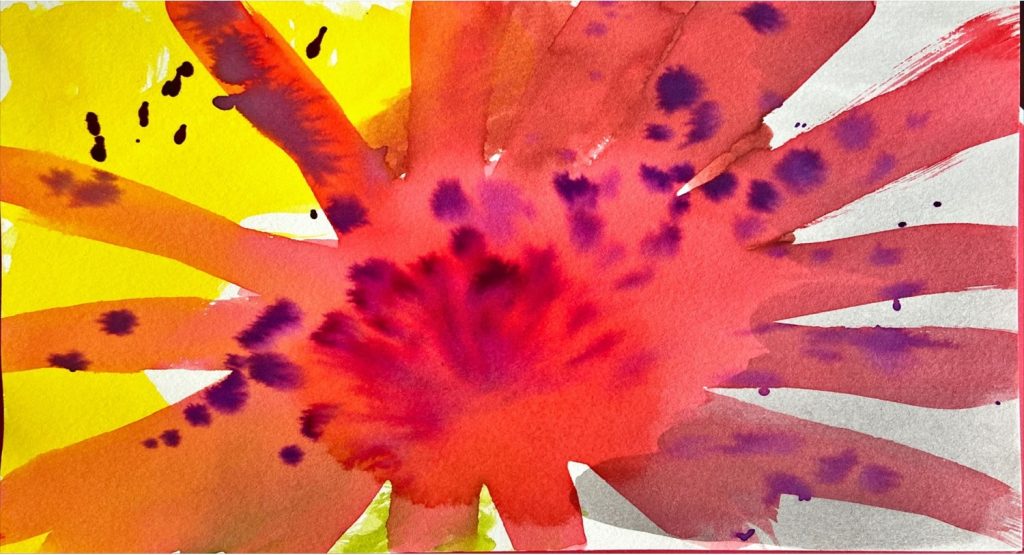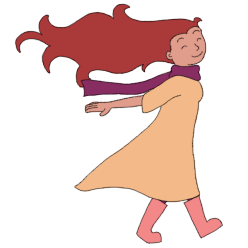
Unless you have studied child development, it is likely you will interpret your child’s behaviour according to the way you react to things.
But children’s brains have not yet developed enough to allow them to behave in adult ways.
Children have to learn to understand their feelings. This makes it hard for them to understand what they are feeling. If they can’t understand, they can’t tell you.
As a parent, you have a role in helping your child to understand their feelings and learn how to process them in a healthy way.
To do that, you need to be able to identify what is happening for your child.
This list is of ways in which children are know to display anxiety. Adults can display anxiety in the same way if they never learned as children how to understand their own feelings.
Here are 9 ways that children display anxiety:
- ANGER
Anxiety can be produced by the feeling of danger or feeling overwhelmed, which is perceived as danger. Danger triggers the fight or flight response. Part of that response is anger. To have the energy to fight or run from danger, your body produces anger. As adults we often react the same way to anxiety, so it is not surprising when your child reacts the same way.
When the fight or flight response is activated, the thinking part of the brain shuts down. This means your child will be angry but can’t tell you why. Later, when they are feeling less anxious they may be able to tell you. Remember, pushing them to tell you what is wrong will just make them more anxious.
- SLEEPING DIFFICULTIES
Anxiety can cause worrying thoughts that will keep an adult from falling asleep, or if they wake up during the night, from falling back to sleep.
It is the same with children. If your child has difficulty falling asleep or wakes up and can’t get back to sleep, it would be a good idea to ask them if there is anything worrying them.
- AVOIDANCE
You may notice your child avoids completing a task, or going to a place or seeing a particular person.
Adults often do the same thing. Do you find you do this? If so, then you can understand how hard it is for your child to do the things or see the people and places that cause anxiety.
It is really important in a situation such as this to sit with your child and allow them to tell you what they are anxious about. Together you can work out a solution. It may be that your child just needs your to accompany them so they can feel safe. There are other solutions too.
It is important to remember that when children are told to do things that they feel anxious about, things their fight or flight response is saying are dangerous, that you don’t tell them they are being silly, or there is nothing to be worried about, and force them to do those things. Doing this teaches your child to ignore their intuition. Intuition is vital for their healthy functioning in life.
- NEGATIVE THOUGHTS
Is your child responding negatively to suggestions or outcomes. Are they saying their homework is horrible and will be marked wrong by the teacher? Are they expressing negativity around attending an activity? Negative thoughts are more often experienced when a person is anxious.
- DEFIANT BEHAVIOURS
You ask your child to do something and they refuse. They may throw things, or yell and scream. They are not being “naughty”. Often it is because they are feeling anxious. Often if a child is asked to do something they feel unable to do, the anxiety they feel at not being able to do the task can be expressed as defiance. Again, it is unlikely your children, having activated their fight or flight mechanism, will be able to tell you what is wrong. Give them space and time to calm down. Sit with them in a non judgemental way and offer support and understanding. When they feel calmer, then they may be able to tell you what is wrong.
Alternately, sometimes defiance can be due to the anxiety of not being in control, which feels unsafe, and it is expressed in defiance as your child tries to get some control (and therefore safety) in the situation.
- THE STRAW THAT BREAKS THE CAMEL’S BACK
Adults do this too. Something minor happens and your child explodes with anger. This happens when hurt and anxious feelings are suppressed for quite some time. There is a limit to what can be suppressed. Eventually something will happen that will be too much to suppress and everything will come out. It may seem your child is overreacting, but if you allow them to calm down and you then ask them they will be able to tell you about what has been troubling them.
- LACK OF CONCENTRATION
Your child is not paying attention to what you are telling them, to things that are happening around them, or to anyone or thing. If your child is anxious, those thoughts may be so overwhelming they aren’t noticing anything around them, including you asking them to do something.
- MICROMANAGING
Some children will express their anxiety by trying to micromanage everything. They overplan what should be simple. It is easy in this situation to get angry at their obsession with everything being done “properly”. But your child is most likely trying to calm their anxiety and unsafe feelings by controlling things.
- I HAVE A TUMMY ACHE
Feelings are not just things we experience in our heads. We also experience feelings in our bodies. It is very common for anxiety to be felt in the abdomen. Adults experience this too. Children don’t know that these things they feel in their body are associated with the thoughts and emotions they experience. Your child may experience a tummy ache and not know it is part of anxiety. So the tummy ache is genuine.
WHAT NEXT
You have noticed your child exhibiting one of the above behaviours and you have stopped and considered they may be anxious. Instead of reacting angrily or with frustration, you respond with understanding.
Now you want to understand what the problem is.
If you rush them to tell you what is happening, it is unlikely they will be able to tell you.
Sit with them. Be relaxed so they can sense your calm and not feel rushed. Maybe you can say: “You seem to be upset about something. Let’s sit for a while.”
When you observe your child seems calmer, you can try asking them what is happening for them. Listen. Let them talk. Don’t interrupt. Offer comfort and understanding. Acknowledge what they are feeling and how that is hard to feel that. It may be that telling you is all your child needs. But there may be a problem you can problem solve together.
A REMINDER
Remember, adults exhibit the same behaviours and often can’t express what is happening until they are feeling calmer. We live in a society that punishes rather then understands anxious behaviours. Many adults have never had the opportunity to learn to understand their own feelings and change their responses to them.
Understanding for your child is vital, and also for adults.
SOMETIMES HELP IS NEEDED
Sometimes your child may need professional help to untangle the anxiety they are experiencing. And sometimes adults also need that help too.
If you would like to talk to me about how I can help you or your child with anxiety, please contact me on 0409396608 or nan@plentifullifecounselling.com.au
If you would like to learn more, I write a regular newsletter with interesting information, tips, information on courses, and the occasional freebie. At the moment I have a free mindfulness meditation for anyone who signs up to my newsletter. This meditation offers a way to safely explore your feelings and learn to be okay with them. If you would like to subscribe please click on the link here: http://eepurl.com/g8Jpiz
